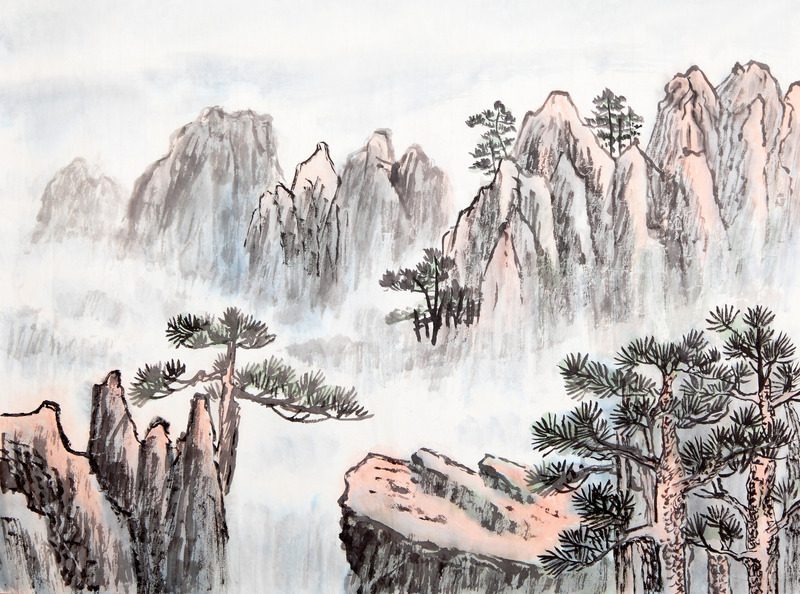Table of Contents
General Introduction
The Black Books consist of 7 volumes written by Carl Jung between 1913 and 1932. They were not available to the general public until the end of 2020, when Sonu Shamdasani published an edited edition, including an introduction to the Black Books. As Sonu Shamdasani indicated at the back of the book-set, they were the most important unpublished work written by Carl Jung.
In this series of 7 articles, I analyse, summarize, and discuss each volume separately. In this article I will discuss the fifth volume of the Black Books, the discussion of the first volume can be found here: Introduction to the Black Books: Volume 1, the second volume here: Carl Jung – the Black Books Volume 2: Challenges Inherent to the Exploration of the Unconscious., the third volume here: The Black Books Volume 3: Look where you least want to Look and the fourth volume here: Carl Jung the Black Books Volume 4: The Librarian and the Shepherd.
If you do not want to miss the discussion of the following volumes of Carl Jung’s Black Books, please consider subscribing to my newsletter or YouTube channel, which can be done here: Newsletter & Youtube
Introduction to the Black Books Volume 5 and Summary of Volume 4
Throughout the fourth of volume of the Black Books we can see that Carl Jung is acquiring more and more confidence during the interactions with the figures of his own unconscious. Carl Jung is actively challenging the figures, resulting in some interesting conversations.
These conversations and thoughts, which emerged while Jung was writing the Black Books, would be the source of the most important and influential ideas of Carl Jung. Throughout the fifth volume of the Black Books we can clearly observe why Carl Jung himself also concluded that all of his most important ideas had their source within this exploration set out in the Black Books: “All my works, all my creative activity, has come from those initial fantasies and dreams which began in 1912.”(Seven Sermons to the Dead , p. 192) One such idea is particularly present throughout the fifth volume of the Black Book, Carl Jungs’s idea of the shadow.
The Shadow
Throughout most of the fifth volume of the Black Books Carl Jung is presented with the darker side of his own personality. Through conversations with his unconscious Carl Jung is, for example, criticized for his selfishness: “You gloatingly leave others in the lurch, if they only get caught in your snares. You exploit their naivety in order to present yourself wiser and superior. You play at modesty and do not mention your merit, in the certain hope that someone else will do it for you: you are disappointed and withdraw hurt if this doesn’t happen.” (p.220)
Moreover, Jung’s unconscious confronts him with the fact that, although Jung finds it important to stay calm and does everything in order to appear calm, this calmness is merely an act: “You preach hypocritical composure, but when it really matters, are you calm? No, you are not, pathetic liar. You consume yourself in inner rage, your tongue speaks cold daggers, your eyes flash with hatred.” (p.221) Carl Jung’s unconscious indicates to Jung, that Jung is using his ‘acts’ to avoid doing what he really must do: “I will crush your glorious superiority under my feet and stamp it into the dirt. All this shall happen to you because of your feeling of inferiority that you abuse day by day in order to avoid your task.” (p.222)
These observations can of course be quite confrontational, however, from these confrontations Jung came to believe in the idea of the shadow. When one explores one’s own unconscious, according to Jung, one will inevitably be confronted by one’s own shadow. A shadow which is always present, but which the individual attempts to hide from the true world because it consists of the darker, less desirable aspects of the individual’s character.
Later, in the Archetypes of the Collective Unconscious, Jung would define the idea of the shadow more thoroughly, an idea which source can, in my opinion, be found in the fifth volume of the Black Books. According to Jung, if one looks deep within oneself, one will come across one’s shadow: “Whoever looks into the mirror of the water will see first of all his own image. Whoever goes to himself risks a confrontation with himself. The mirror does not flatter, it faithfully shows whatever looks into it; namely the face we never show to the world because we cover it with the persona, the mask of the actor. But the mirror lies behind the mask and shows the true face.” (On the Archetypes of the Collective Unconscious, p.43)

Jung believed that this was the first test, a test which is a part of the exploration of the unconscious, and for some, the confrontation with the shadow would be so frighting that further exploration would become impossible: “This confrontation is the first test of courage on the inner way, a test sufficient to frighten off most people” (Ibid) However, as long as one avoids this confrontation, the individual might project his or her own shadow upon others and the world in general: “For the meeting with ourselves belongs to the more unpleasant things that can be avoided as long as one can project everything negative into the environment.” (Ibid)
I believe that this is also why Jung would later argue in his book Aion, that the world could become a victim of a conflict that is not resolved within the individual: “The psychological rule says that when an inner situation is not made conscious it happens outside, as fate. That is to say, when the individual remains undivided and does not become conscious of his inner opposite, the world must perforce act out the conflict and be born into opposing halves.” (p.71)
However, if we are capable to see our shadow, and are able to accept this darker side of our own personality, we become aware of our personal unconscious, and can thereby benefit from this inner harmony: “But if we are able to see our own shadow and can bear knowing about it, then a small part of the problem has already been solved: we have at least brought up the personal unconscious.” (On the Archetypes of the Collective Unconscious, p.43) As a result, one no longer needs to hide oneself.
Conclusions
Carl Jung’s idea of the shadow is one of his most well-known ideas. It is extremely interesting to see, by reading the Black Books, how Jung came to the realization of the existence of the shadow. As we can see in the fifth volume of the Black Books, Jung learned about the idea of the shadow through the exploration of his own unconscious. This is also why the editor, Sonu Shamdasani, wrote in the introductory volume that Jung believed that the ideas which he was uncovering, did not apply just to himself, but were psychological characteristics common to all: “In Jung’s view, his undertaking pertained not just to himself but to others as well: he had come to view his fantasies as stemming from a general mythopoeic layer of the psyche, which he named the collective unconscious.” (p.12)
Becoming aware of one’s shadow and accepting one’s shadow are important parts of the integration of the unconscious. In case you are interested in this process of integration, you can find more information in a previous article here: Integrating the Unconscious – The Process of Individuation – Carl Jung. In the discussions of the following volumes, this process will be analysed as well.

